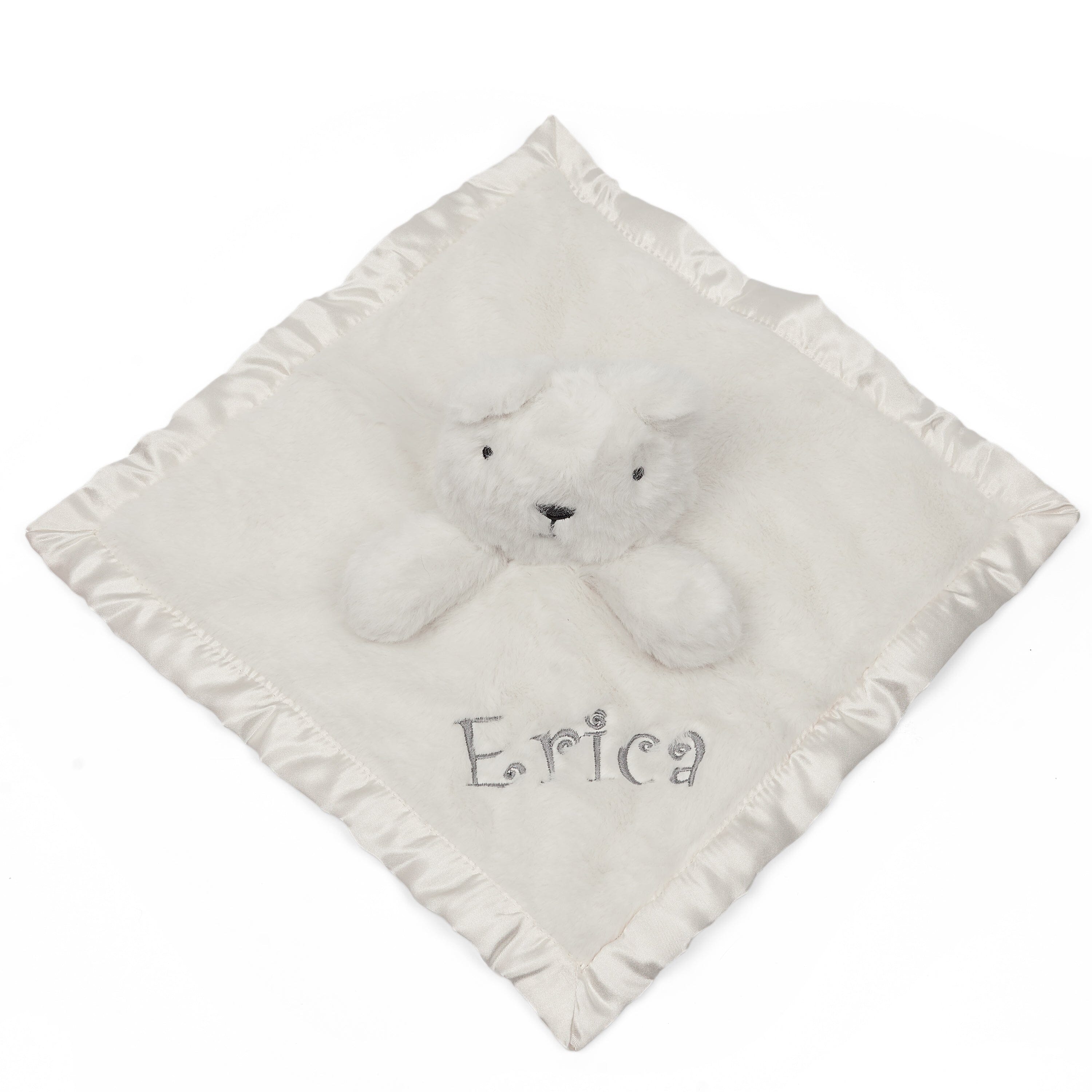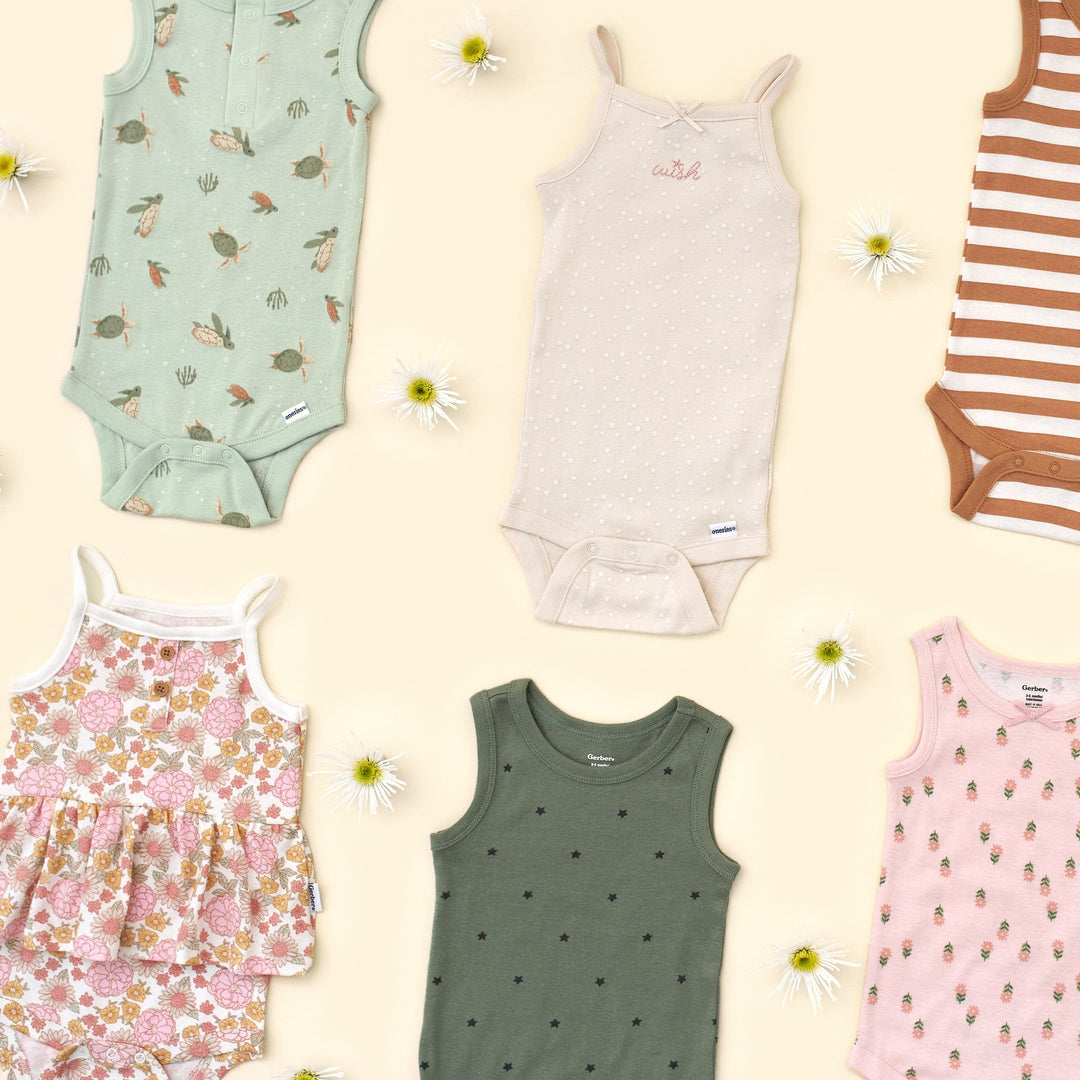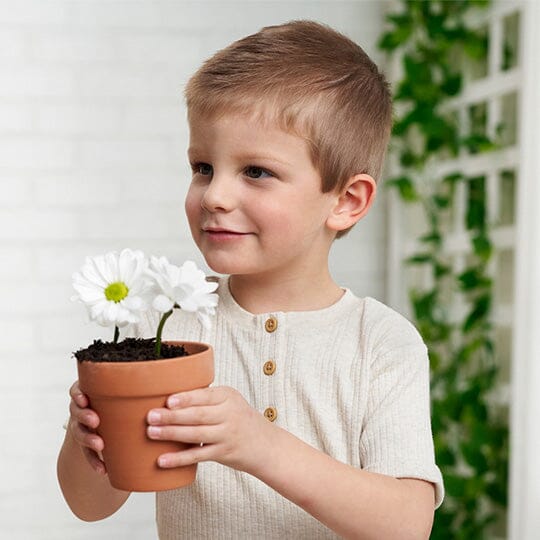How to Establish a Baby Sleep Routine: Ideas for Bedtime and Nap Routines

When a family first brings baby home, the first few months are often referred to as the “sleep survival” phase. Since newborns wake up to feed every hour or two, exhausted and frazzled parents will do almost anything to get some well-deserved rest. If this sounds like you, hang in there for a few more weeks! Your little one will soon begin to distinguish night from day and rest longer between feedings.
At around the 3- to 4-month mark, some (but not all!) babies will begin to sleep for several hours at a time, allowing mom and dad to get through a few REM sleep cycles and feel more human again. Unfortunately, this newfound bedtime bliss may end quickly. Many infants around 4-5 months of age enter into what is known as a baby sleep regression which can have them waking every couple of hours again.
Whether you’re a parent of a child who is going through a sleep regression, or just want to try to prevent sleep problems before they start, it helps to know how to create a regular baby sleep routine. Read on to learn more about the most common issues that affect your infant’s ability to fall and stay asleep during naps and at bedtime. You will also discover what you can do right now to establish excellent sleep habits. With a little preparation and practice, you will not only rest better as a parent, but you will also help your little one adopt healthy associations with sleep for a lifetime.
Understanding the Most Common Obstacles to Baby Sleep
In the beginning, it’s okay to do whatever you need to do to get baby to sleep. After the newborn stage, however, your child may start to make certain sleep associations. These assumptions about how to get to sleep could hinder their ability to learn how to fall asleep on their own. Typical sleep associations include having to be rocked to sleep, needing to be held until fully asleep and nursing right before each and every nap. While these techniques will get you through the tiring first few months, they could become obstacles when baby gets a bit older.
We want to be clear that if what you’re doing is working for your family, you don’t necessarily need to fix it. Your child’s physical and emotional development is fluid and every baby is different. It’s when certain habits begin to make sleep more difficult that you may need to take action.
Some parents try to gradually and gently break sleep associations to help their child fall asleep and stay asleep on their own. There are various baby sleep assistance and training methods out there but do what feels right for your family. If you find your little one doesn’t like to rest unless rocked, for example, try to reduce the amount of rocking time over a couple of weeks. If you usually spend 15 minutes rocking, attempt to stay stationary for three minutes, and then only five, until baby no longer needs the repetitive motion. If you’d like, you can try the same approach with other habits.
There are also times when baby isn’t sleeping well because he or she needs an improved naptime and nighttime routine. A relaxing and predictable set of events leading up to bedtime and daytime rest can make your little one more comfortable about going to sleep. It can also help them develop the confidence to fall asleep without assistance.
Creating a Simple, Soothing Routine
If you’re just starting out with a sleep routine, all you need to do is pick out a few simple activities. As you brainstorm, make sure you can commit to them during each nap and every evening. The important part is that it fits into your family’s natural schedule and helps baby wind down for sleep.

Some parents like to bathe their baby after dinner and then give them a massage with lotion and read them a book. Others find that dressing their child into comfy pajamas and then singing a lullaby and turning on a white noise machine settles their infant into slumber. A shortened version of your nighttime routine often makes naps easier. Get creative and incorporate the activities that bring you and baby closer together. Don’t be afraid to change your routine over time to better accommodate the needs of you and your son or daughter.
Drawing Relaxing Baths for Baby Sleep
When babies begin to drool, crawl and roll, they’ll need more baths than before. A relaxing nighttime bath is the perfect way to keep them clean and make them sleepy. Begin by ensuring the water is comfortably lukewarm. While you want to work quickly enough that baby doesn’t get chilly, you’ll also want to make sure each stroke of the washcloth feels soothing. Try using a mild soap infused with lavender, vanilla or oatmeal. Play soft music in the background, such as a set of classical sonatas or slow electronic beats set to nature sounds.
Massage baby’s hair and rinse their head carefully. Once the bath is done, move them to a soft baby bath towel. Focus on getting them warm as quickly as possible so they don’t get fussy. When your little one’s hair and skin are dry, put a diaper on and gently massage their body with lotion. Put them in a clean and cozy pair of footed pajamas or a soft cotton bodysuit made with organic cotton under a sleep sack. Brush or comb their hair and then rub their belly or back.
Reading a Bedtime Story with Baby
Experts agree that reading to baby each day helps them develop language skills and creates a bond between parent and child. Many moms and dads also find that it helps their infant fall asleep. First, pick a title that fits baby’s development level. If there are too many words or too little pictures, your little one may become bored or irritated instead of relaxed and delighted.

It’s okay to read the same selection a few days or nights in a row, especially if your child is enjoying it. Try something new in a couple of days so they continue to expand their vocabulary. You’ll probably find they prefer a few different stories. You may even develop favorites of your own!
Recite each line in a soothing, measured voice. Give baby time to gaze at the illustrations of animals or nature scenes. If they fall asleep or seem overstimulated, end the reading session and move on with your routine.
Choosing Comfy Bedtime Clothing
Experienced parents will tell you that the right clothing is the key to baby’s comfort. The act of dressing them in new clothes can also help put them to sleep. After ensuring your little one has a clean and dry diaper, place them in a fresh outfit made of a high quality, soft material that matches your indoor temperature.
If the nursery is less than 70 degrees, a cotton sleepsuit will wick moisture and prevent skin irritation. Pair the pajamas with a swaddle or wearable blanket for an extra snug feel. Rompers with socks are also an excellent option for tall babies or those who don’t like to be confined in PJs with feet.
When the indoor temperature is between 70 and 76 degrees, you can put baby in a bodysuit and then zip them into a muslin wearable blanket or light cotton swaddle. A temperature above 76 is not recommended for sleep, as it could make your child sweaty and uncomfortable–regardless of their clothes. The same goes with cool temperatures. Try to keep your home around 68 in winter to avoid discomfort and overdressing.
Baby Sleep Aids
Along with swaddles and wearable blankets, there are a few other sleep aids you can use to promote a restful slumber. These include pacifiers, sound machines and room darkening blinds.
If you opt to use a pacifier at bedtime, do know that losing the pacifier from the mouth may cause them to wake again. Your baby may need some time to learn how to put the soother back in their mouth on their own. If he or she begins to fuss after the pacifier comes out, you can usually put it back in and lull them to sleep. You may grow to find this is an invaluable technique during a sleep regression.
Most babies like background noise during rest, since they heard so much of it in the womb. Plug in a sound machine with rain sounds, ocean sounds or white noise near baby’s crib and you’ll usually find it is easier to get them to sleep. Some infants will grow out of the need for these sounds after several months, while others will continue to find it comforting.
Room darkening blinds make it feel like the middle of the night, even if you’re putting baby down when it’s light outside. They are also helpful for soothing the senses when your little one is overstimulated after a long day. Put your child to sleep in a darker room and watch them fall asleep quicker and rest longer. Room darkening blinds come in a variety of colors and materials to match any nursery.
Adjusting Baby’s Sleep Routine
It’s okay to change baby’s routine as they grow. When baby doesn’t want a swaddle or pacifier anymore, you can remove it and continue with the other activities as normal. You can also experiment with adding an event to your nighttime schedule.
As long as you focus on what baby needs before they go to sleep, as well as what makes them relaxed and comfortable, you should soon find success. Don’t worry if you change the routine and your little one doesn’t like it. As mom or dad, you have the flexibility to continue to try it out or go back to the old standard.

A Rested Baby Is a Happy Baby
Finally, resist the urge to compare your baby sleep routine to others. Measure your success by how happy and well-rested your little one is on a daily basis. If they fall asleep easily at night, are not cranky during the day and do not resist nap time, they are likely getting enough sleep. It may also help to refer to pediatricians’ baby sleep standards. In general, newborns sleep eight hours during the day and eight hours at night, while a 3- to 5-month-old is expected to nap 4-5 hours per day and 9-10 hours at night.
If you have specific questions about your child’s sleep needs or about their bedtime routine, don’t hesitate to talk to their doctor. Every question is valid when it comes to your baby. In a short amount of time, your evening rituals will be so intuitive they’ll bring joy and predictability to the entire family. Best of all, the comfort and relaxation your baby now associates with sleep will help them rest better for years to come!














